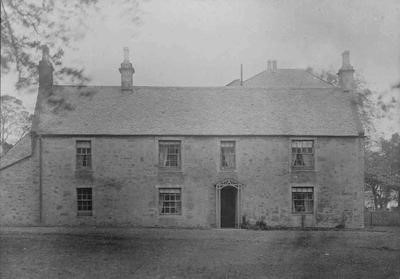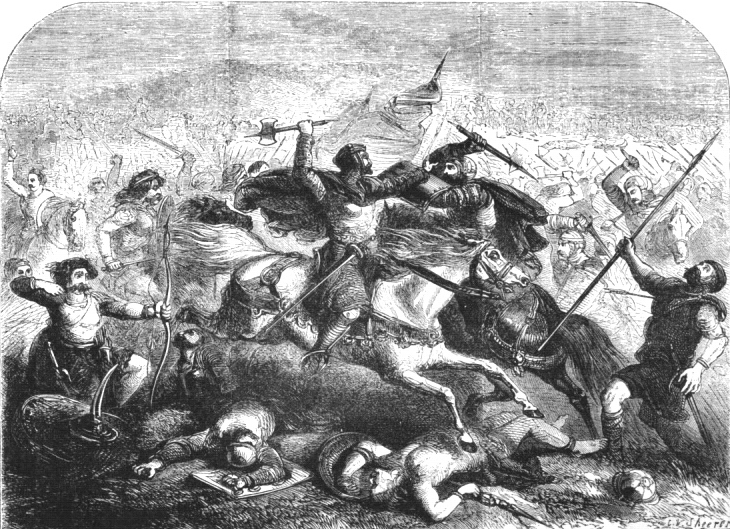For over 100 years Camelon, Falkirk has been associated with buses and bus production, currently trading as Alexander-Dennis Ltd, whose website boasts: “ADL is a global leader in the design and manufacture of double deck buses and is also the UK’s largest bus and coach manufacturer.”
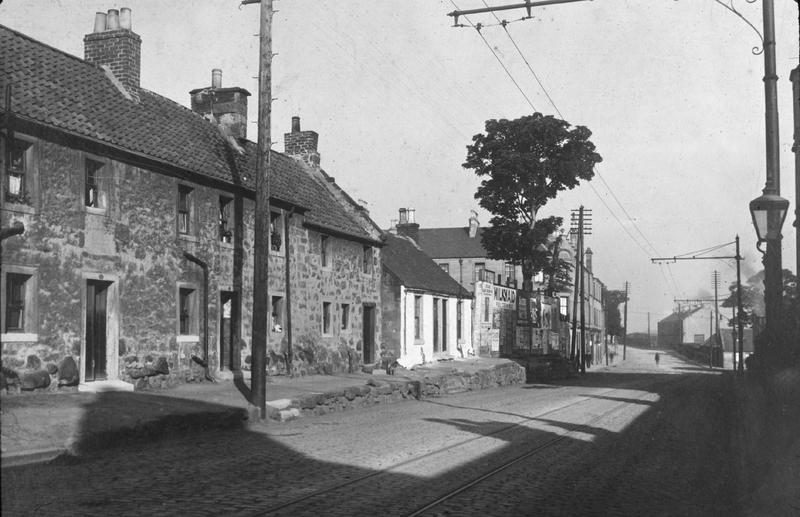

The 1920s
That’s quite something for a company whose seeds were sown many years ago. To find out more about this Camelon legacy we have to go back to the 1920s (see the 1920 photograph of Camelon Main Street above). What would we see as we travelled from Falkirk back then? Perhaps we would be delayed at the canal crossing as the bridge swung into place after allowing a fishing boat to pass through. As we reached the centre of the village there would be buildings lining both sides of the road, shops at street level and homes above.
The street would be clear of today’s traffic management: no traffic lights, pedestrian crossings, islands, nor roundabouts at either end of the Main Street. Horse drawn carts are in use delivering goods to the shops, and people go about their business on bicycles – perhaps bought from Alexander’s shop in the village? You immediately notice the trams running a circular route in both directions serving Falkirk, Carron, Stenhousemuir and Larbert. Giving increasing competition to the trams are the buses in Alexander’s blue livery, now providing a reliable service around the district. The blue buses are operated by local businessman, Walter Alexander.
Walter Alexander
Like many a 20th century entrepreneur his was a humble start in life. He was born on the 2nd of May 1879 and grew up with his two older brothers at “Blairlea,” Bonnybridge, where his father, Robert, was a carter. He was just 19 and living in Main Street, Bonnybridge, when, in November 1898, he married Isabella Daly, a table-maid. Their daughter Marjory Daly was born in 1900 and their son Walter was born in 1902 (Scotland’s People Records).
At that time, Walter Alexander was working as a grate-fitter at a Bonnybridge foundry and in the evenings he spent time with his two brothers repairing and selling bicycles. He even managed to save enough money to set up a bicycle shop of his own in Camelon. It was while he was working there that Walter saw the possibilities of road passenger transport. He had a motor lorry which he used for haulage work, but on the two weekend nights he fitted it with wooden forms, put a hood over it, and fitted bicycle lamps inside, and transported people between Falkirk, Bonnybridge, and Denny for the price of an old penny. This was the “char-a-banc” – a cart with benches (Mary Cramb interview, see char-a-banc below).
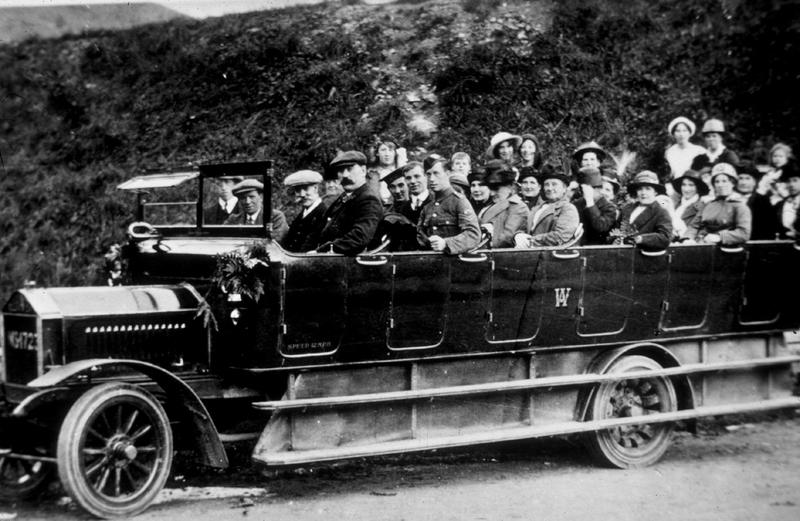

In 1913 he launched “Alexander’s Motor Service,” but it was not until after World War One, in 1919, that he acquired his first bus. This was luxurious by previous standards for it had glass windows and cushioned seats, but still solid tyres. This bus ran between Falkirk and Kilsyth. A few years later, in 1922, Walter Alexander was expanding his service and now manufacturing his own vehicles. He was ready to employ a conductress for the first time.
Conductress Mary Cramb
That first conductress was Mary Cramb. In 1950, the BBC recorded an interview between Mr Thomas Mackie, Editor of the Falkirk Mail, and Mary, by then Mrs Stewart. I am grateful to Ian Scott for allowing me a copy of the script from that interview.
In the interview Mary spoke about how Walter Alexander knew her father, a local plasterer, and how she herself had been a conductress on Falkirk Tramways for about 3 years during World War One. Her wage was to be £2 a week. Walter Alexander would be her driver on this “new” route from Falkirk to Kilsyth and back. She was to charge the travellers what she thought was “a fair fare.” There was no uniform provided at first but one did come later. The bus was a 40-seater, quite a lot bigger than other early buses appearing on the roads. Mary said Walter was a good man to work for. By the time Mary left two years later, Walter Alexander was running no fewer than 40 buses and his business expanded rapidly from that time on.
Mary may have been the first conductress (or clippie – a name given no doubt because of the machine that clipped the tickets) but a whole regiment of women (and some men) have followed in her footsteps. The Kelty Clippie even has a song written about her:
She's just a Kelty clippie, she'll no tak' nae advice
fields['text']) echo $section->fields['text']; ?>
It's, Ach drap deid or Ah'll bile yer heid or Ah'll punch yer ticket twice
Her faither's jist a waster, her mither's oan the game
She's just a Kelty clippie but I love her just the same
Here’s a definitive recording of “The Kelty Clippie” by John Watt:
Thanks to Neon and Cathy Watt for permission to use this track and lyric. Further details, including where you can buy the song, are below.
Clippie Memories
The conductresses were characters and “wee Jenny” is one of our most remembered. One local, for example, recalls:
“My mum was a clippie and remembered Jenny. Jenny was on the bus one night when a man tried to get on her bus with his dog. Jenny told him “sorry there's already a dog on the bus we can't take another.” The man started to swear at Jenny and finally said “you can stick your bus up your a...” to which Jenny replied, “if you'd done that with your dog you would have got on the bus.”
But there were others too – here’s just a flavour of memories gathered from comments on Falkirk’s social media:
“Wee Jenny, she was a character; she was a conductress for many years.”
“I remember Sandra who was the clippie on our school bus in the mid-1960s. She had blonde hair like Marilyn Monroe and wore bright red lipstick. She stood no nonsense and we were all slightly terrified of her! But my mum & my aunt knew her and she was so nice away from us kids!”
“Sounds like my auntie Sandra. She worked the buses until she married my uncle Bobby who was a driver, then she gave the job up. They did in those days. She adored Doris Day and used to blonde her hair like her. She also knitted her own (bright yellow) ties for wearing with her uniform.”
“She always said they were the happiest days of her life. I remember her coming down the stairs in her uniform when I was little, jingling in her work gear and cap.”
“Yes they would be happy times. I remember her telling me if there was any trouble on the bus if she pressed the bell four times then the driver went immediately to the nearest police station. I don't think she had any cause to ever use it.”
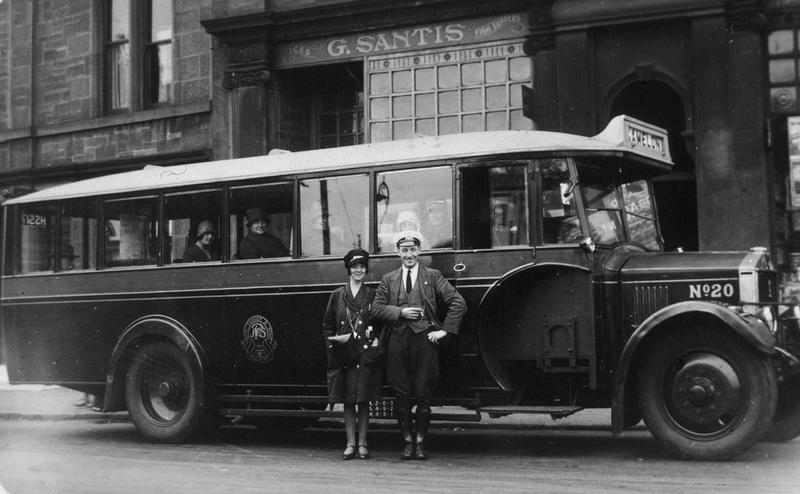

Here you can see Alexander’s bus with crew at Larbert, 1930. Eventually the conductresses (and conductors) were phased out and consigned to the history books – we miss their cheery helpfulness.
The Bus Business Expands
The expansion of both the passenger service and bus-building in Camelon continued. In 1934, the “Bluebird” bus logo was launched, and when Walter Alexander’s company merged with SMT, Alexander’s buses were carrying more than a hundred million passengers a year – a huge achievement for this Camelon business (Mary Cramb interview). This was about the same time that Walter and his wife moved away from Camelon to live in Clackmannanshire in the mansion that is Solsgirth House. Sadly, his wife Isobel died at Solsgirth in 1935. Walter continued to live there until his own death in 1959. But his name lives on to this very day.
By Anne Paterson and Elizabeth Cox, Hidden Heritage: Camelon and Tamfourhill volunteers.
